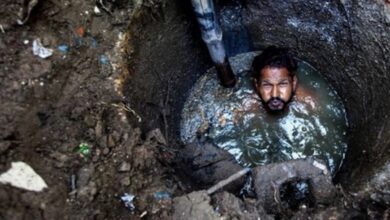The 15th Finance Commission has opted for continuity and predictability

Any country becomes a well-functioning economy only when the state and centre work in accordance with each other, especially in terms of finances and distributive shares. As a means to suggest and ensure a concrete financial relationship between the centre and the states, a constitutional body called the finance commission is established by the President of the country for a period of 5 successive years. On these grounds, the current finance commission i.e. the fifteenth finance commission presented its report for the 2021-26 period on the day of union budget announcement in early February 2021. But before we talk about what was presented in the report of the fifteenth finance commission, let’s talk about why it was presented. The basic purpose of the finance commission’s existence is to give recommendations for the devolution of taxes and other fiscal matters for five fiscal years. Keeping in view the tightening of fiscal revenue for both centre and state due to the coronavirus pandemic in the last fiscal year, the efficient devolution became all the crucial especially considering the GST revenue share centre still owes to the states and their compensatory promise of the last fiscal year.
Now, as for what is there in the current report of the new finance commission, the share of tax devolution to states for the coming 5 fiscal year period has been retained at the same level of 41 per cent as it was before, according to the recommendations of the fourteenth finance commission. Technically, the fourteenth finance commission suggested a share of 42 per cent but keeping in view the addition of Jammu and Kashmir, and Ladakh as union territories bring the estimated total to about 41 per cent, as is to be maintained for the next period. To understand why this continuity has brought in speculations from the people, we need to take a look at the track record of the preceding finance commissions.
For a long period of time, each finance commission has somewhat increased the share of devolution of taxes to the state keeping in view the growing delegatory needs and demands. However, the chairperson of the 15th finance commission, Mr N.K. Singh said that the current finance commission decided to choose continuity and predictability, by weighing all the options considering that the fiscal space of both states and centre has explicitly shrunk due to the pandemic constraint. However, it is to be noted that even though the share of tax devolution has been kept the same as the fourteenth finance commission, the income distance has been reduced from 50% in the fourteenth finance commission to 45% in the current, increasing the share for population devolution. Income distance is the distance of a state’s income from the state with the highest income. The income of a state has been computed as the average per capita GSDP during the three-year period between 2016-17 and 2018-19. A state with lower per capita income will have a higher share to maintain equity among states.
“We had an option of continuing this trajectory, we had an option of enhancing this devolution to a somewhat higher figure. We had the option of somewhat recalibrating downwards looking at the constraints on the fiscal space of the central government.” Said Mr N.K. Singh with respect to the commission’s decision to keep the share at 15 per cent. “Finance Commission is not an encounter with shock and awe, the Finance Commission has a legacy which believes in stability, continuity and predictability. We opted for continuity and predictability,” he said.
It was also highlighted by the Rajya Sabha MP Mr Sushil Kumar Modi that the share of divisible pool is slowly shrinking as the cess and surcharge section of the Gross Tax Revenue is increasingly claiming its size. To understand what this means, take note of the fact that the fifteenth finance commission’s decision to share 41 per cent of tax revenue of the centre with the state applies to the divisible pool of taxes. This divisible pool of taxes includes all taxes except for cess and surcharge, where surcharge refers to the progressive tax that is levied on income beyond a certain level mark, currently Rs 1 crore. Now, continuing with India’s same old habit of finding loopholes to escape accountability and responsibility, the size of these cess and other non-sharable taxes has been increasing tremendously for the past few years, meaning that the share of tax revenue from the centre to the state has been consistently falling. This, in practice, has meant that the share of states in gross total revenue of the centre has never reached 41% and in fact, has gone down over time.
The 2021-22 Budget puts the estimated devolution of central taxes to states at just 30% of the centre’s gross tax revenue. So, in place of focussing on the share to state as a proportion of the divisible pool, it should be ensured that the share to cess and other special taxes is reduced by maintaining scrutiny over how and what items are being thrown in the non-sharable section. Even though the Rajya Sabha MP Mr Sushil Kumar Modi talked about the problem, no feasible solution was discussed in the said encounter. However, of the estimated Rs 132.5 Lakh crore as the gross tax revenue for the five coming years, the divisible pool is expected to be Rs 103 lakh crore, which accounts to be about 22 per cent of the total GTR, still a considerable amount.



